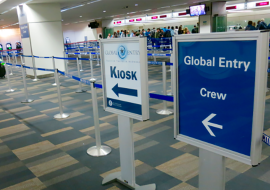Tourism Industry Big Data Analytics Reshape the Future of Travel

According to Future Market Insight, the global tourism industry's big data analytics market is likely to reach US$ 486.6 billion by 2033, registering a CAGR of 8%. This is a substantial upsurge from its projected worth of US$ 225.4 billion in 2023.
The market has experienced significant growth and relevance. This development can be attributed to the tourist industry's growing use of big data analytics. In the fiercely competitive tourism landscape, companies that can harness the power of big data have an advantage. They can identify trends, predict customer needs, and stay ahead of the competition. Big data analytics confers a competitive advantage by enabling businesses to make informed decisions promptly.
The rising demand for personalized and enhanced customer experiences is a key factor driving market growth. Travelers are becoming more discerning and seeking tailored services. Tourism businesses leverage big data analytics to understand customer preferences, behaviors, and expectations. By analyzing large volumes of customer data, businesses can customize their offerings. They can also provide personalized recommendations and deliver exceptional experiences. The demand for personalized services has fueled the adoption of big data analytics solutions in the tourism industry.
Big data analytics plays a pivotal role in destination management. It empowers authorities to make data-driven decisions. These decisions are regarding infrastructure development, crowd management, and tourism planning. Data on visitor flows, preferences, and behavioral patterns are utilized. They are used to design sustainable tourism strategies. Additionally, data helps allocate resources effectively. It also aids in mitigating negative impacts on local communities and the environment.
The tourism industry faces dynamic market conditions, changing trends, evolving customer preferences, and fluctuating demand patterns. Big data analytics enables businesses to analyze vast amounts of data. The data come from various sources like social media, online reviews, booking platforms, and customer feedback. The analysis helps identify emerging trends and make data-driven decisions. Analyzing real-time data and gaining insights into market trends and customer demands has become crucial. It is essential for staying competitive in the tourism industry.
Big data analytics lets tourism companies gain insights into customer behavior and preferences. These insights help them target marketing and advertising efforts more effectively. Companies can identify relevant channels, messages, and offers by analyzing customer data. They can do this for different customer segments. This analysis improves the return on marketing investments. It also helps drive customer acquisition.
Integrating artificial intelligence and machine learning technologies with big data analytics has propelled market growth. AI and ML algorithms automate the analysis of large datasets. They also uncover hidden patterns and correlations. These technologies enhance the accuracy and efficiency of decision-making processes. The tourism industry recognizes these technologies' value and potential to drive growth. Consequently, there has been an increased adoption of big data analytics solutions.
Data storage, processing capabilities, and cloud computing infrastructure advancements support the tourism industry's big data analytics market. Advancements in data storage and processing capabilities have made it easier for tourism businesses to handle large volumes of data. Cloud computing plays a crucial role in the accessibility of big data analytics. It allows businesses to access powerful analytical tools and platforms. As a result, big data analytics has become more accessible to a wider range of companies in the tourism industry.
As the market continues to grow, numerous companies specializing in the tourism industry big data analytics have emerged. These companies offer a range of solutions, including data management, data integration, predictive analytics, and visualization tools tailored to the specific needs of the tourism industry. They aim to assist businesses in extracting actionable insights from their data. They also help optimize operations and improve overall performance.














